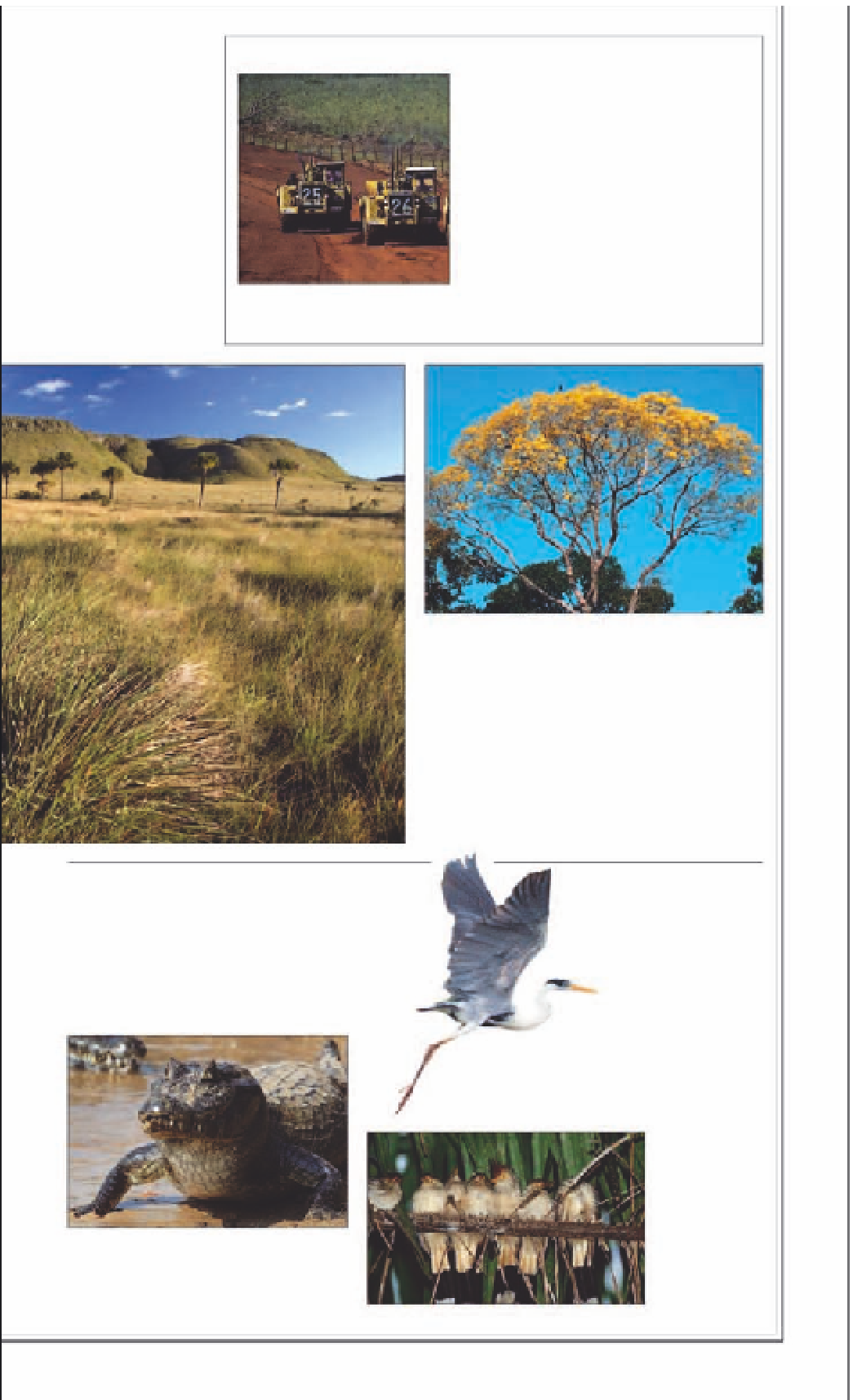Travel Reference
In-Depth Information
Buriti palms
often
grow over subter-
ranean water. They
are an important
source of food for
many large parrots
and primates.
CONSERVATION OF THE CERRADO
Central Brazil's ancient
cerrado
forests
are rapidly being cleared for soya
plantations and cattle ranches. Since
the late 1990s, steps have been taken
to identify conservation-priority areas
and better manage protected areas.
Recently, private reserves, established
under the Private Natural Heritage
Reserve system, have become an
important component of biodiversity
protection in the
cerrado
. There have
also been more intensive faunal and
floral surveys of the region.
Savanna
formations
in the
cerrado
are not
homogenous.
Hilly areas have
denser, more
varied flora than
the grasslands.
Tractors paving the way for a
new farm in the
cerrado
Ipê tree
is a large canopy tree. Its vibrant
trumpet-shaped flowers bloom in spectacular
yellow, pink, and mauve throughout the
cerrado
.
FLORA IN THE CERRADO
The
cerrado
is characterized by its vast
expanses of grassland, scattered forests, and
palm groves. The landscape varies between
the “open
cerrado
,” predominantly grassland,
without trees and shrubs, and “closed
cerrado
,” the more forested areas.
FLORA & FAUNA OF PANTANAL
Although the world's largest wetland forms
part of the southern extreme of the
cerrado
,
the Pantanal
(see pp320-21)
comprises habitats
most associated with the Amazon. Many
cerrado
species live here, as well as marsh deer, capy-
bara, caimans, waterbirds, and monkeys.
The white-necked
heron
is a common
sight in the Pantanal,
especially along river-
banks, where
it feeds. This
graceful bird
builds its nest on a
platform on trees
close to the river.
Guira cuckoos
are slightly
scruffy-looking
birds that nest,
roost, and feed
in groups, eat-
ing insects,
frogs, and eggs
off the ground.
Caiman
numbers in the Pantanal have
increased after a ban on hunting them
for their skin and teeth (considered
charms against witchcraft) took effect.


































